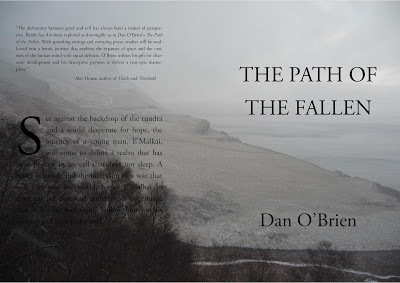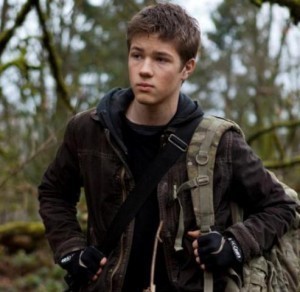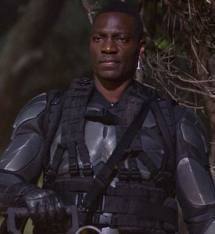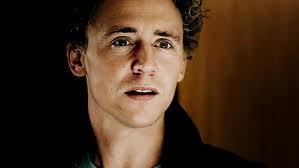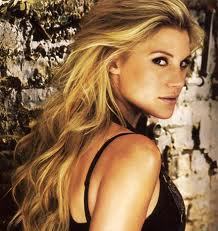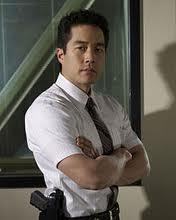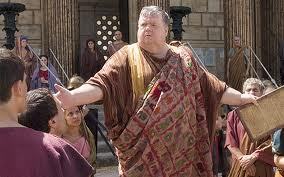Gerald Dean Rice's Blog, page 72
November 24, 2012
Oh My!
What a week it’s been. As I have recently published my first full novel, I have moved into trying to figure out how to market. I can’t believe how many sites out there are devoted to instructing people how to do their own marketing. Of course, most of what I find says pretty much the same things, and they usually want to sell me a course to let me in on all the details.
One thing leads to another and before I know it another day has slipped by without my writing a single word on my new story. Hopefully once I get all this good advice into some kind of organized plan, I’ll be able to get back to my novel.
Let’s see, the first and seemingly most important issue is to build a hub from which all the other facets can take off from; the hub being either a blog or a website. Okay, that part I started about a month ago. I enjoy blogging and reading other’s blogs. No problem.
Next thing is to grow a mailing list. I have to work on that one. It is suggested getting social is a good way to let people in the cyber world know I even exist. All well and good, except I’m enjoying the social aspect too much! I’m spending a lot of my time getting to know people, which I love, but how do I fit in some time to write?
Then there is figuring out how to launch my new book. I’d never even heard of a book launch before getting into all this marketing business. I need to learn how to set up book signings if I want the general public to know I live and breathe and sell books! Okay, I will do that just as soon as I find the time.
Book trailers, what a great way to advertise what my mystery book is all about. One more thing I have to learn from the ground up. I’ve never even videotaped anything except my children with a super eight camera forty years ago. That one I will put on hold.
I go into the internet to find an answer to one of my many, many questions. Before I finish one thing it links me to another that I just have to see before I lose track of it, and then there’s a new link there vying for my attention. I’m gleaning a wealth of information, which is boggling my mind. And I still need to get back to my writing.
My helpful sites tell me all this marketing strategy takes time, lots of time. Patience is essential, stick-to-itiveness is a must, and fortitude helps a lot.
Meanwhile my husband is beginning to think he’s a widower. Now that will never do. He is, and always will be, my number one priority. So I will keep plugging away. I will make time for writing. And most important, I’ll spend quality time with Marv. Everything else will just have to be patient.

http://carolcarrollauthor.wordpress.com/carols-book/
https://www.facebook.com/Caredoe
https://twitter.com/Carol30154835

November 23, 2012
Let Me Explain…
I tweeted about a writing pet peeve, something about ‘he thought to himself’. I thought this was obviously redundant considering if you think something, it can only be to yourself unless you’re a telepathic.
But as with all thing internet, this was immediately disputed by someone stating this is ‘internalizing’ as if this was an actual term.
It isn’t.
If a character thinks something, ‘internalization’ is already established. And a character nodding to himself is just as silly. He either nods or he doesn’t. There is no ‘to himself’. That implies that he’s committing the action with something other than his real, physical head as it was something only he could perceive. I have no clue how a character comes about having this ghostly appendage and what purpose it serves outside of establishing that a character can agree with himself, but it’s definitely a reading speed bump and, in this author’s estimation, should be avoided.

November 22, 2012
I Know How Dexter Will End…
Now of course, I’m only operating on a theory, but I think the stars are aligning for one ending in particular for Dexter Morgan.
He’s going to wind up on his own kill table.
But first, a few things are going to happen. LaGuerta is going to continue to pursue the Bay Harbor Butcher and her theory that he’s someone who works for Miami Metro. I thought for a moment she might come to the conclusion it was Quinn as he fits the general profile of single white male, but he’s too much of a screw-up, whereas the Butcher has to be someone who is orderly.
The rest of this season will play out with Deb deciding to take matters into her own hand and kill Dexter’s girlfriend, putting him in the position of either following his code and killing Deb or letting her live, which would destroy the code. Of course, Dexter can’t kill his sister, so Dexter will be left to reinterpret the code, meaning he can kill more than just other killers and he will slip into this area in the final season. But not before Isaak Sirko has to be dealt with. Dexter doesn’t want to kill him because Sirko’s death will bring a lot more problems than it would solve. I’m not entirely certain how that gets fixed–perhaps Deb kills him on a legit shoot. On second thought, Quinn is going to kill him and go to prison.
But the final season will have LaGuerta zeroing in on Dexter as the Bay Harbor Butcher and I think they will go back to the books for source material and have a serial killer imitating Dexter’s M.O., killing those who have escaped justice, but maybe leaving more of a mess than Dexter would. Dexter and his sister will be on opposite sides, as she knows what he does and no longer finds issue with it, but also knows she has broken his code. After Dexter kills and disposes of his copycat, the noose will be tighter than ever, leaving Dexter and Deb on a final collision course where she winds up confronting him after he has strapped himself on a table and leaves her with no other choice but to kill him, freeing him and thus, saving herself. Because if Dexter isn’t the Butcher then Deb couldn’t have been covering for him.
I’m sure there are bugs in this theory. For instance, if the copycat is killing killers, then they should suspect Dexter of being a killer, right? Well, perhaps people already do. His wife’s killer was never caught and there had to be people who thought he had something to do with that.

Minimalist style pictures by me
The Path of the Fallen
Guest Post from Dan O’Brien:
I thought it might be fun to imagine who would play the characters from The Path of the Fallen. I would encourage people who have read the book to comment, and disagree if need be. If you would prefer not to have the characters imagined a certain way, then I would steer clear of this post. This is a list of actors and actresses I can imagine playing the characters based on what I have seen them in previously (I will comment briefly on what it was specifically that makes them an ideal fit) as well as the look of the character as I envisioned them.
E’Malkai Armen
(Connor Jessup)
E’Malkai has always been different than everyone else, and the actor who would play him would have to be able to convey both a sense of belonging and distance from those around him. Connor plays Ben Mason on TNT’s Falling Skies, which, in the words of a friend of mine, is little more than a science fiction family drama. That being said, he delivers on a kind of quiet desperation and intelligence that I think would fit E’Malkai well.
Elcites
(Adewale Akinnuoye-Agbaje)
Elcites, Umordoc guardian of young E’Malkai, must be able to convey tremendous emotion and power with only slight movements and limited facial expressions. Additionally, the beast-like appearance of the character requires much emoting without saying very much at all. Adewale has a great screen presence, and this was quite apparent in his character ‘Mr. Eko’ on Lost. I think his ability to convey emotional depth with a stare or a posture makes him ideal to play the remorseful and trustworthy Elcites.
Fe’rein
(Ryan Gosling)
Fe’rein, born Ryan Armen, has become the All-god of a world bathed in hatred and shadow. The character undulates between a sullen hatred and a wanton desperation obscured by tremendous power. Ryan has demonstrated his ability to be a likable character, a powerful actor. His performance in Drive solidified for me that he had the physicality and emotional range to truly bring to life the villainous and flawed Fe’rein.
Arile
(Jim Caviezel)
I have to admit that Arile is one of my favorite characters. His wry cynicism and quiet, yet powerful, demeanor makes the choice of Jim Caviezel a no-brainer. His portrayal of ‘Mr.Reese’ on Person of Interest has shown that he can play physically imposing characters.
Leane
(Lena Headey)
Leane, E’Malkai’s mother, is a character fraught with secrets and influence. Her sadness is hidden behind a veil of confidence and command that serves her too well. Lena Headey portrays ‘Cersei Lannister’ on HBO’s Game of Thrones and has proven to be an incredible actress. I could not imagine a more cunning character, and as such I think she would be a perfect fit for Leane.
Seth Armen
(Jude Law)
The path of the Fallen began with the exile of Seth Armen. Seth has all of the qualities present in Jude Law’s portrayal of ‘Dr. Watson’ in Sherlock Holmes. Seth is strong, intelligent, and somber by necessity. Though not a major component of The Path of the Fallen, he still has a strong influence over E’Malkai’s journey to discover his place in the world.
Kyien
(Ben Foster)
Kyien is the leader of the Culouth armies and a narcissistic, unlikable jackass. Ben Foster, from the moment I saw him on Six Feet Under, was brilliant. He has range and I would love to see him play a power-hungry madman who at moments can be cunning and manipulative.
M’iordi
(Tom Hiddleston)
M’iordi is a manicured, cultured councilman who sits at the right hand of Fe’rein. His intelligence, as well as his lust for power, make him a useful ally and a frightening enemy. The obvious selection for Hiddleston’s prowess would be his commanding villainy in Avengers. However, it was a quiet performance in Midnight in Paris that really resonated with me.
T’elen
(Katee Sackhoff)
T’elen is a powerful and beautiful warrior woman who commands legions and is quick to take a man’s head for foolishness. I have two words for you: Battlestar Galactica. I might as well have just named the character Kara Thrace, but honestly Katee encompasses everything about the character that I could imagine.
Xi’iom
(Tim Kang)
Xi’iom is a commander with a simple demeanor and a severe dislike for smiling. If you have watched The Mentalist, then you will no doubt be familiar with Tim Kang’s portrayal of CBI agent Kimball Cho. He has the serious demeanor and unwavering personality that defines Xi’iom so well.
Higald
(Alexander Skarsgard)
Higald, proud chieftain of the Fallen, is built like a viking: blond hair, cold blue eyes, and a somberness that cannot be quelled. Sounds a bit like Eric Northman, no? Not really, but Alexander Skarsgard has the look, though he would need to put on some muscle to look the part and smile a little less. Higald is not as pleased with himself as Eric on True Blood is.
S’rean
(Idris Elba)
S’rean is by no means a major character, but he is a significant presence in the second half of the book. Idris Elba has taken on so many fantastic roles from The Wire to Luther that I wish I could cast him somewhere else. Perhaps if the movie ever does get made, casting folks will be able to place him in a role worthy of his acting prowess. Either way, he would be a wonderful fit for S’rean.
Augustine
(Ian McNeice)
This might have been the most obvious cast for me. Ian McNeice has been delighting moviegoers for a very long time, and if I didn’t know better, I would think that I created the part specifically for him. Augustine is the speaker of the Culouth population, a vociferous and superfluous orator with a powerful and distinct voice.
Check out these other posts about The Path of the Fallen:
http://thedanobrienproject.blogspot.com/p/the-fallen-chronicles.html
http://thedanobrienproject.blogspot.com/2012/09/the-path-of-fallen-release-weekend.html

November 21, 2012
How Well do You Listen?
Authors, as you sit down to feast this Turkey Day, I have something I want you to all ponder. Many of us will have family over from different areas or be the ones visiting. Even if you aren’t going anywhere or having anyone over and will be dining alone on a dry turkey sandwich, listen.
Listen to the people around you. Listen to the people on the television. Listen to your neighbors, friends, and even strangers. Every writer worth his salt is constantly refining his craft. No one ever reaches the pinnacle of writing and no longer has anything he can improve.
What I want you to listen for is how people speak. We all know the basic mechanics of speech, but often times how our characters speak can become mechanical if we aren’t careful. Or, equally bad, we have characters, regardless of gender or ethnicity, who all speak the same.
Listen for the ‘ain’ts’, the ‘finnas’, the ‘yourns’. Human beings, despite knowing better, rarely, if ever, speak consistent, proper English. We are a wealth of contradictions, choosing the wrong word because it feels right or it fits in context better.
I know I’ve been guilty of this deadly writing sin (of mechanical writing), but I do find myself listening a little bit more when I hear an interesting accent or when I’m speaking to someone from another country or another state. I try my best to go back over text and rearrange syntax in some characters’ speech. It gives them a little more personality, makes them a little brighter.
And not just with character speech should we be trying to make these adjustments. For those of you who haven’t, I would suggest reading Zora Neale Hurston. Really, pick up anything she’s written. Every page is filled with poetry. I only wish I could write like her. Her prose infuses characters with such a wealth of depth and personality even without them having to say a word. It shouldn’t come as a surprise the woman was also an anthropologist.
Here in Southeastern Michigan, one of ours is adding the letter ‘s’ on the end of certain businesses. I don’t, but I hear people say ‘Meijers’, ‘Fords’, and ‘Targets’ often. I even had the opportunity to edit a manuscript where all the major characters were Indian and the author misspelled certain words as a means of illustrating the characters’ accents.
That’s all for now. Best of luck to those of you who’re working on NaNoWriMo projects. I know I’ve tried and will fall well short of 50,000 words, but at least I’ve finally given it a go.

Fiction Character Development
When people learn that I write fiction, I’m often asked to describe my main characters and, specifically, they ask how I develop the concepts for those characters. The answer is simple: from observing people in their everyday lives. The long answer, however, is much more complex.
While it’s true that a character is often based on real life experiences, transforming a mental image of someone into a fictional character is an intricate process. It’s comparable to applying multiple layers of varnish onto a raw piece of furniture. You apply, buff, reapply and buff some more before the grains of finish develop depth and beauty.
In a similar way, character development layers all the components of a person (or several different people) in order to build a multi-dimensional being that the reader can connect with in the two-dimensional world of literature.
In the process of developing a character, I follow something I call my 3P Model. I structure a character physiologically, psychologically and philosophically.
The Physical Aspects of a Character: You should have a good idea what your character looks like before conveying that to a reader. Physical appearance is the first to lock down in your own mind. Even if you never describe that character’s anatomical features, you should visualize a definite physical image. Appearances often influence how others act around a person and, although we need not specifically state what a person looks like, hints at physical attributes give the reader much needed information to arrive at an accurate mental image, how the character acts and how others may react in their presence.
Keep in mind, however, that only rookie writers actually go into detail describing a character. Instead of saying, “She’s five foot eleven, has red hair and weighs 110-lbs”, you might say, “Her legs went on forever, her waistline the envy of most women, her flaming hair a perfect complement to her peaches and cream complexion,” or some other subtle, more pictorial description. Be creative, not biological, when describing characters.
The Psychology of the Character: A character’s mental state – their feelings and their perceptions of the world around them – drive their actions. This is where background development becomes so important. Create a virtual life for your main characters, a pedigree that makes them who they are and which determines their actions. For example, a person raised in a loving family with close siblings would react differently in a given situation than a person who grew up in foster care or reform school.
It’s said that we are the product of our life experiences. For readers to be able to connect with the characters we create, we have to construct full lives for those characters we write about. That means where and how they were raised and educated and what sacrifices they endured to reach their present state of being. Most of what you envision (preferably in a brief outline) will never actually be stated in your book unless it’s important for the story’s progress, but it provides valuable information to direct your character and the story.
Knowing how a character would feel in a scene provides important visual clues that you can use to indicate what a character is thinking and feeling without wasting dialogue. For instance, a character fidgeting indicates nervousness and putting a hand over the mouth could express disbelief.
The reader should be satisfied that a character is acting appropriately in any given scene. Your job as a writer is not only to write the scene but also to direct your characters to act accordingly. A reader should never say, “Hmm, he would never have done that!” It takes the reader out of the story and you lose the reader’s emotional connection to the character.
The Character’s Philosophy: Each of us has opinions and beliefs about most any given subject. Our characters should also to be definitive, and those distinct beliefs and philosophies are what drive the story one way or the other. An indifferent character doesn’t make for good storytelling.
A character can be indecisive initially and that can create important dramatic tension, but then their inner principles must take over. Without a character with strong viewpoints, there’s no reason for the character to take action and the story doesn’t progress. Action moves a story forward and motivates our protagonists and antagonists to do what they should do to entertain the reader.
Characters should be good or evil, but rarely neutral. Good and evil characters create and drive a story. A villain’s selfishness and greed make good fiction as well as the altruistic concerns of a hero, but neutral characters don’t. They may be necessary to create a realistic background, but they don’t propel the story to any formidable conclusion and are always secondary.
Finally, success is in the details. A well-conceived character has likes, dislikes, and specific needs – just as real people do. Everyone has merits, flaws and quirks. Your dialogue and narrative should be peppered with those of your main characters. The more these individual traits are exposed, the more emotional connection the reader has with a character. Make your characters real and believable by first making them real to you.
Thoughts? Comments? I’d love to hear them!
James J. Murray
Website: http://www.jamesjmurray.com/
Blog: http://jamesjmurray.wordpress.com/
Facebook: https://www.facebook.com/jamesjmurray...
Twitter: https://twitter.com/JamesJMurray1

November 17, 2012
Road to Publication: The Importance of Reading
Guest Post from Linda Covella:
Last week, I talked about the importance of learning your craft and suggested certain courses available to writers. But one of the fundamental and key things that will teach you to write well is to read, read, read.
By reading, you’ll learn proper grammar, sentence structure, punctuation, and spelling—the basic tools for writing. The more you read, the more these rules will become a natural part of your writing process. For instance, in this article on becoming a better speller, the author, Catherine Osborn, was asked how she knew the word “valiant” was spelled with an “ant” and not an “ent.” She surprised herself by not really knowing how she knew this. Then she goes on to say, “The number one thing that bolsters your spelling ability is reading.”
Learn From Successful Authors
Besides learning the basics, you can also analyze why certain books are successful. Take a book that you particularly enjoyed and look at how the author developed characters, what plot devices were used, how tension was created. What was it that made you want to keep turning the page? This is especially helpful when you read books in the genre in which you write. Treat a book as your classroom and reading as the homework you don’t have to dread doing! Pile on the books. Devour them. Learn from them.
Becoming a Reader
It’s never too late to become a reader, and by this I mean wanting to read, having to read, getting a little panicky if you don’t have a book to read. Does that sound extreme? Well, that’s how I am! If I finish a book, say, at night before bed and I don’t have another book lined up, I’ll scour my bookcase for something, anything to read. Now I try to have a few books on my bedside table to avoid those late-night frantic searches.
Teach Your Kids to Love Reading
I was lucky. My love of reading was a gift given to me at an early age by my mother. She’s a retired children’s librarian, and I remember calling her at work, “Mom, I need some more books!” Until I started browsing the library bookshelves on my own, I was happy with the stack of books she brought home.
Become a reader yourself, and you can pass that love on to your children. Make reading part of the culture of your home. Your kids will do better in school, and they’ll develop a life-long joy and passion for reading, something that will forever open their hearts and minds to new worlds, new ideas. Books also offer kids (and adults) a way to look at their own life that at times can be confusing, at feelings that can be difficult to express. And books can simply entertain.
In a recent article titled “How to Teach Your Child to Love Reading,” author Susan Elkin states that, according to a report by the National Literacy Trust, “only 30 per cent of children and teenagers read books daily in their own time. In 2005, the figure was 40 per cent.”
Most people’s first reaction (as was mine) is to blame television and all the electronic gadgets kids have these days. But Elkin says, “Actually, the root cause lies in the way children are taught to read and the failure to develop them as readers.” And this: “The most useful thing parents can do to encourage children and teenagers to read is to be seen reading a lot themselves.”
If you love writing, if you want to write well, you must read. Even if your dream isn’t to be a published author, become a reader. Become someone who loves to read. And pass that love on to your children.
How much do you read? How did you become a reader? Are you teaching your children to love reading?
Facebook: http://www.facebook.com/linda.covella
Twitter: @lindacovella
LinkedIn: http://www.linkedin.com/in/lindacovella
Blog: http://santacruz.patch.com/users/linda-covella/blog_posts

A Writing Perspective from the Other Side of the Fence
A Guest Post by Dan O’Brien
Life as a writer can be hard sometimes.
Success is elusive; fans shift as often as a summer wind.
Yet, we persevere, writing into the late hours of the night and waking in the early hours of the morning to log the hours and enter, for a time, the worlds we create. When I first started writing, more than a decade ago, it was because I loved the idea of immersing myself in a place where I could construct the narrative; walk through dense forests and to the tops of mountains. Over time the process became more about writing as a tool to move through emotions and languishing memories that required catharsis.
Writing takes on many forms, for many different writers, over the course of our lives.
For me, the process is the reward.
I love to write.
When I ask myself that silly question of what I would do if I had all the money in the world, the answer is always quite simple: write. Now more than a decade later, I have a renewed sense of purpose and have become quite adept at balancing the spinning plates of responsibility.
Recently, between being a full-time graduate student and writer, I joined Empirical magazine as an editor – among other responsibilities. A national magazine similar in spirit to Harper’s or The Atlantic, the magazine is firmly rooted in a West Coast sensibility. There is a little something for everyone, and honestly, the hope is that everyone will take a look. Contributors to the magazine come from around the globe and cover everything from politics to fiction.
Working at a magazine, especially at this point in its maturation, is a wonderful experience. There are so many moving parts that enliven your day. Sometimes I spend the day sorting through fiction and poetry submissions, searching for that piece of prose, or perhaps a stanza, that ensnares my imagination. Other days I am editing, constantly referring to the Chicago Manual of Style to ascertain the correct usage of an archaic sentence structure. As a writer, the prospect of editing and rummaging through the work of others might not sound exciting, but there are some wonderful consequences:
1. You learn to become a better editor of your own work
2. You begin to recognize redundant sentence structures and overused phrases
3. Your grasp of language grows exponentially
However, the most important component for me is:
4. You get to help others bring their work into a public forum
For many writers, and certainly for me early in my writing career, the notion of being picked up by a magazine or a small press was foremost in my mind. It was that distant promise of publication and everything that goes with it that pushed me forward. When I got rejection letters, most of which lacked a personal touch, I would get down on my writing, denigrate my ability.
The years passed, during which thousands of rejection letters amassed, and I realized that the pursuit of writing for a purely extrinsic reward was dooming myself to Vegas-style odds. I became clear to me that I needed to write because I loved it, and then find a way to share it with others – even if it was not through traditional routes. I found that I was more comfortable with my writing when I did it for the pure joy of it.
Now that I am on the other side of the fence, so to speak, I have noticed a few myths about submitting to paying publications that otherwise mystified and frustrated me prior to becoming an editor and being responsible for interacting with first-time and established authors.
I have decided to provide a humorous, but serious, collection of things you should do and things you shouldn’t do when submitting and entering into a discourse with a publication – sprinkled, of course, with some anecdotes. And without further ado (or perhaps slight ado if you count this sentence here):
Things You Should Do
1. Read the publication you are submitting to before sending an email. This one sounds obvious, I know. However, it happens so often that it warrants mentioning. If you have written a brilliant piece of prose that is about zombies, it is quite likely that Popular Mechanics will not be that interested in it. Pick up an issue of the magazine you are interested in submitting to and familiarize yourself with the kinds of stories they publish. The next part is the hardest part: be honest. Does your piece fit with what they publish?
2. Read and follow the submission instructions. Again, a no-brainer. If you are thinking that you don’t know where to find the submission instructions and you just have an email address, be prepared for disappointment. Your email might go to submission purgatory with a one-liner response about having received your correspondence – if you’re lucky.
3. Address your submission to the appropriate person. If you are thinking that I am giving you the obvious pointers, then you are quite right. With that in mind, imagine that I still receive hundreds of emails a month that manage to ignore these simple suggestions. If you are writing a stunning expose on corporate greed, the poetry editor is probably not the best destination for your work.
4. Edit your work. I tell this to students a lot, so I will mention it here as well: spell check in Microsoft Word is not sufficient. I am not saying that you need to be a copyeditor to submit to a magazine, but do yourself a favor and read it out loud. If it something sounds funny when you read it, you can only imagine how it will sound to an editor who is choosing among thousands of articles and stories to determine what goes to print.
5. Be cognizant of turnarounds. By this I mean, the amount of time between when you sent in the work until you hear back from an editor about the status of your submission. Nothing will send your work to the bottom of a slush pile than to send a follow-up email the day after you submitted, wondering whether or not you are going to be in the magazine. Most publications will post how long it takes to hear back from them about the status of a submission, and an amount of time after which you should contact them if you haven’t heard from them.
Things You Shouldn’t Do
1. Send an email telling an editor that they would be stupid not to publish your work. It always surprises me when I get an email telling me that I need to publish a story, poem, or piece of nonfiction because it is the next best thing. Top this off with letting me know that I would be a fool not to accept it, almost guarantees a trip to the trash can.
2. Send a photocopy of your story by registered mail. If you want to have your story in a magazine, start by giving it to editors in a format that they can actually use. By sending a faded and blurry photocopy of your forty-word poem and declaring that it is a soul-searching masterpiece does not inspire as much confidence as you would think.
3. Contact an editor on a frequent basis about the status of your submission. I have to sort through hundreds of emails a day, edit for the current issue, and work on editing an anthology; not to mention a thousand other intangibles. We posted a time table about getting back to you for a reason: read it.
4. Be discouraged by a form rejection letter. This is a bitter pill to swallow for many writers. They think the form rejection letter means that the editor didn’t read their work, or simply had things already planned and was stringing writers along. The reality is on any given month I send out hundreds upon hundreds of rejection letters. There is simply not enough time in the day to offer feedback to every single person. This not to say that I do not offer feedback, or that editors do not offer feedback in general, but instead the process is streamlined so writers can be responded to in a reasonable amount of time.
5. Call the magazine to find out about your submission. This is subsumed by not contacting an editor about the status of your submission before enough time has passed, but I thought it warranted a special mention considering it is really going the extra mile in terms of being an irritation. If we haven’t gotten back to you yet, calling us is not going to suddenly make us more accessible.
6. Send another email with corrections. Read twice, send once. If you don’t think what you sent is ready for publication, then please don’t send it. You get one chance at a first impression, and nothing speaks to being underprepared and unprofessional than sending a draft and immediately following up with another draft. If your piece needs work, note that in your submission, but don’t send a series of emails chronicling the different stages of the edits for that story. The exception, of course, is if you have already been accepted and you have been asked to make edits.
7. Contact the magazine to air your frustrations about not being selected. I say this with all seriousness. It is very likely that you got rejected because the piece was not a good fit and not that the magazine has decided to order a hit on your writing career. Please don’t treat it that way. Lashing out at a publication for sending a form rejection letter, or passing on a piece you have written, reeks of a lack of professionalism and could impact your ability to publish elsewhere. Many editors are friends, especially in the digital age, and word spreads fast.
8. Contact the magazine to ask if you think a story you are working on would be a good fit elsewhere. I can appreciate the sentiment. A lot of editors are writers themselves, and they love talking about the process and the product. I find myself building friendships with writers, those we publish and those we do not, and often I will give them suggestions about their work. However, if you don’t know me personally and have never been published or solicited in any way to use me as a sounding board, then do not contact me and ask if a poem or story would be a good fit at another magazine. If you think it is ready for publication, then submit it here. An obvious exception would be if the writer knew the story would not be a good fit and asked because they were uncertain in venturing into new territory.
I could probably keep listing things you shouldn’t do, but I will wrap it up there. I encourage you to keep trying and keep writing. Things only get better with time, and time is all we really have. I love to hear from other writers and potential readers, so please stop by and say hello.
Bio: A psychologist, author, editor, philosopher, martial artist, and skeptic, he has published several novels and currently has many in print, including: The End of the World Playlist, Bitten, The Journey, The Ocean and the Hourglass, Juxtaposition, The Path of the Fallen, The Portent, Book of Seth, and Cerulean Dreams. Follow him on Twitter (@AuthorDanOBrien) or visit his blog http://thedanobrienproject.blogspot.com. He also works as an editor at Empirical, a national magazine with a strong West Coast vibe. Find out more about the magazine at www.empiricalmagazine.com.

November 16, 2012
The Zombie Archives
There’s a few days left to win that $25 gift card. If you haven’t reviewed The Zombie Archives, grab a copy today. This contest ends 11/30/12. Barnes & Noble or Amazon gift card, winner’s choice.



